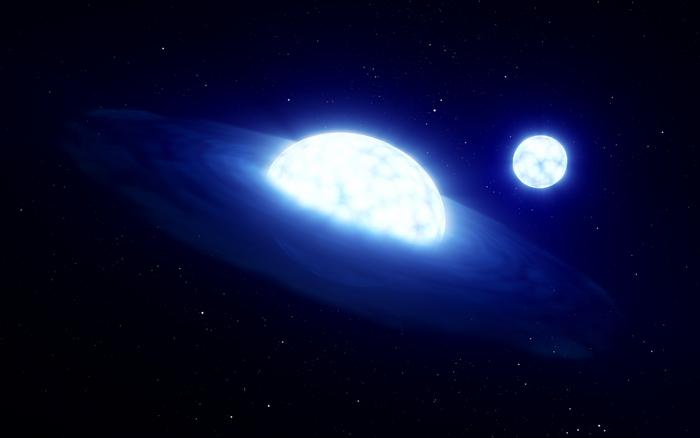Mysterious, Saturn-Like Stars Steal Their Rings From Nearby Stars
Posted on Categories Discover Magazine

By observing a complex dance of stars, astronomers have come up with a new explanation for why exotic Be stars – B-type stars that show emission lines – have their own Saturn-like rings.
Conventional wisdom states Be stars are locked in orbit of another star, in a so-called binary system. Forces from the second star cause the Be star to rotate quickly and sling material out into a ring. But the new study questions this explanation.
Observing Be Star Movements
The team drew on data from the European Space Agency’s Gaia satellite, which has toiled to build a precise 3D model of the Milky Way Galaxy. Along the way, it has observed Be stars over months and even years and tracked their movements.
“If a star moves in a straight line, we know there’s just one star,” said co-author Jonathan Dodd, a Ph.D. student from the University of Leeds, in a statement. “But if there is more than one, we will see a slight wobble or, in the best case, a spiral.”
Read More: 10 Facts You May Not Know About the Milky Way
Comparing B-Type Stars and Be Stars
Dodd and the rest of the team looked at Be stars and ringless, bright blue B-type stars and found that, unexpectedly, the latter were more likely to have companion stars. B-type stars are highly luminous, relatively massive stars – think Rigel in Orion – that spew large amounts of ultraviolet light out into the universe.
To cast a wider net, the team expanded their search to include binary systems with greater separation between the stars. This time, the results came back as expected, and a new picture began to emerge of Be systems that featured not just two but three stars.
Where Do Be Stars’ Rings Come From?
In a game of galactic billiards, a mysterious third star would push the companion toward the Be, which would in turn suck some of the companion’s material into its rings. This exchange with the “vampire” Be star would lessen the companion, making it too small and faint to show up in telescopic observations.
Read More: Spiral Arms in Space Explain How Star Systems Form
How Movement Explains Star Formation
The researchers say the new understanding of Be stars could greatly expand the study of how stars live and die.
“Over the last decade or so, astronomers have found that binarity is an incredibly important element in stellar evolution,” said René Oudmaijer, a professor at the University of Leeds in the U.K. “We are now moving more towards the idea it is even more complex than that and that triple stars need to be considered.”
Read More: What Happens When a Star Dies?